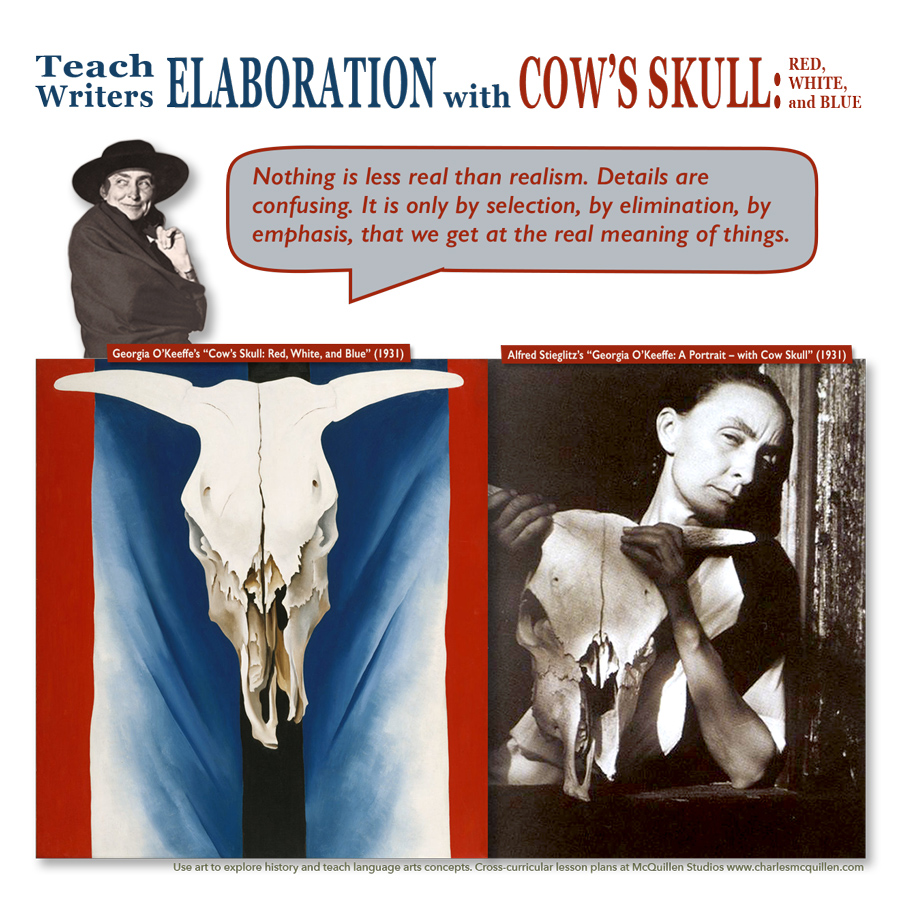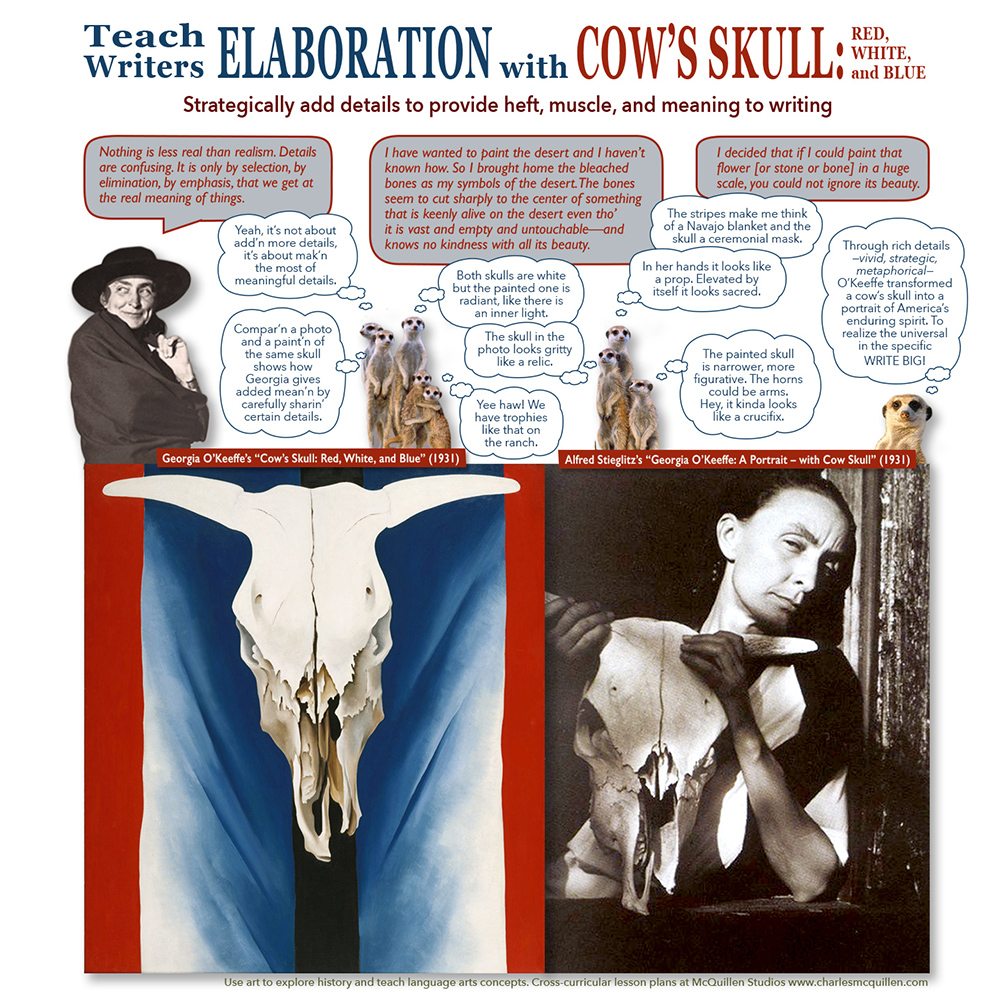 Georgia O’Keeffe’s Cow’s Skull: Red, White, and Blue offers mentor art for teaching students the importance of elaboration and how to make the most of meaningful details.
Georgia O’Keeffe’s Cow’s Skull: Red, White, and Blue offers mentor art for teaching students the importance of elaboration and how to make the most of meaningful details.
Mentor texts have long been used to model writing techniques. Mentor art can likewise be used to inspire, teach, and refine student writing. Mentor art has the added benefit of addressing diverse learning styles and providing visual support to language learners. Consider introducing your students to the importance of elaboration with Georgia O’Keeffe’s Cow’s Skull: Red, White, and Blue.
It is beneficial to let students experience a work of art on its and their own terms before using it as mentor art. This link offers teaching moves and language for introducing students to Georgia O’Keeffe’s Cow’s Skull: Red, White, and Blue. Cow Skull: Red, White, and Blue is part of The Met’s collection. See the Metropolitan Museum of Art’s website to learn more.
Project the image above, read O’Keeffe’s quote, and have students respond in small groups to the following discussion prompts and report back. Click on the image to expand. Download the pdf below.
#1 Compare O’Keeffe’s painting of the cow skull with the same cow skull shown in the photograph. What details did O’Keeffe select, eliminate, and emphasize in her painted cow skull?
Turn, Talk, and Report Back (Possible answers)
O’Keeffe isolates and elevates the skull making it more prominent. Centered and stretching to the edge of the canvas the skull is the sole focus. The plain, uncluttered background is distraction-free and enhances this prominence. The photographed skull rests heavy and low on the windowsill, off center, sharing space with Georgia. The painted skull appears more bleached and pristine, while the photographed skull has more shadows and seems gritty. The painted skull is narrower. Its shape and features are sharper. The lines in the background accentuate its features.
#2 How do O’Keeffe’s carefully selected details transform the skull and give it added meaning?
Turn, Talk, and Report Back (Possible answers)
The even lighting on the painted skull seems supernatural. It’s like it has its own inner light. The narrowness of the painted skull makes it more figurative. The way the horns reach out like arms from the center make the skull crucifix-like. This perception is reinforced by its elevated position on a strong vertical line. This lighting and bearing makes the painted skull seem sacred. In addition, this elevated placement visually connects the skull to prized animal trophies and Native American ceremonial masks. The painted skull is a sacred icon, while the photographed skull is a quaint artifact. The skull in the painting is not just the remains of a steer, it evokes the diverse cultural influences that make up Southwestern society. Its not about a dead animal, its about an enduring spirit. While O’Keeffe focuses on a specific skull her visual references expand its meaning and make it a more universal symbol.
#3 How might Georgia O’Keeffe’s approach to elaboration and use of details inform the way you write and describe people, objects, and events? (Answers will vary though students may note it’s not about adding more details, its about making the most of meaningful details and that by focusing on specifics, the writing gets bigger and more universal.
Expand your discussion with Georgia O’Keeffe and a group of meerkats. Note the meerkats are an unpredictable lot and can be a tad impetuous. Their opinions and actions are not those of this organization. Don’t blame us for what they think. Click on the image to expand. Download the pdf below.
How would you use Georgia O’Keeffe’s Cow’s Skull: Red, White, and Blue to teach the importance of elaboration or other writing techniques? Extend the discussion with your comments below.
Prose is architecture and the Baroque age is over.
— Ernest Hemingway
The more specific you are about places and characters, the more universal the song becomes.
— Rosanne Cash
For myself, I always write about Dublin, because if I can get to the heart of Dublin I can get to the heart of all the cities of the world. In the particular is contained the universal.
— James Joyce
Any moment any person’s idea at any one moment, any artifact, if you could understand it well enough would be a portal into the whole rest of the universe.
— Robert Pinsky
Teach-Elaboration-2-handout


Comments are closed, but trackbacks and pingbacks are open.